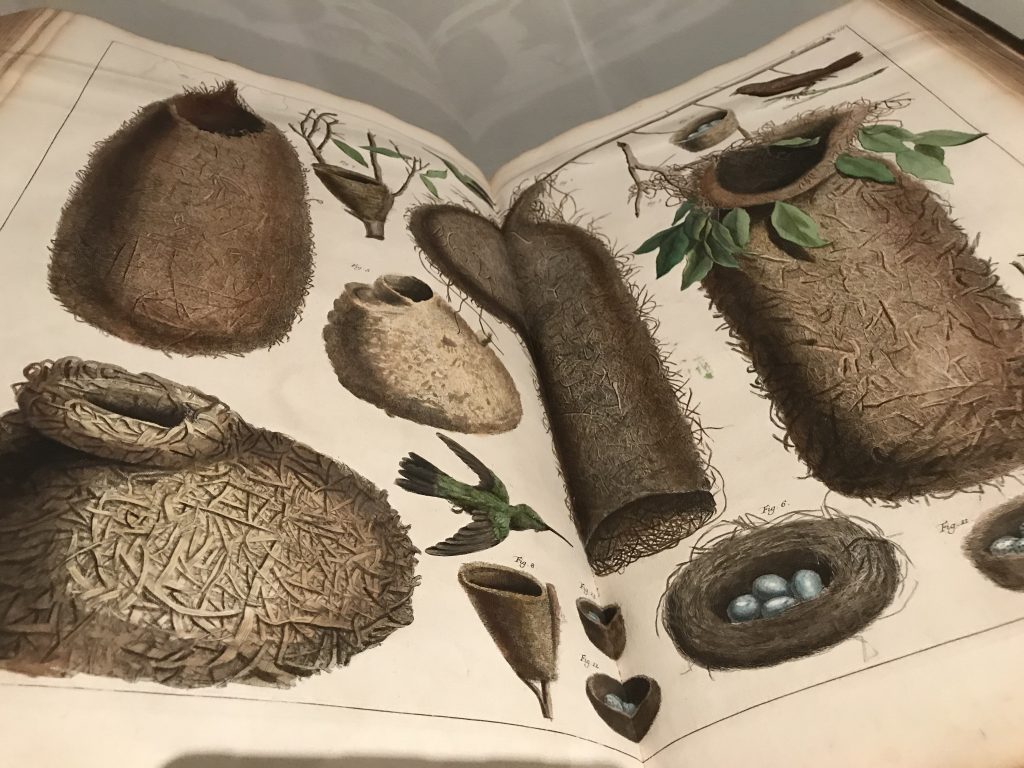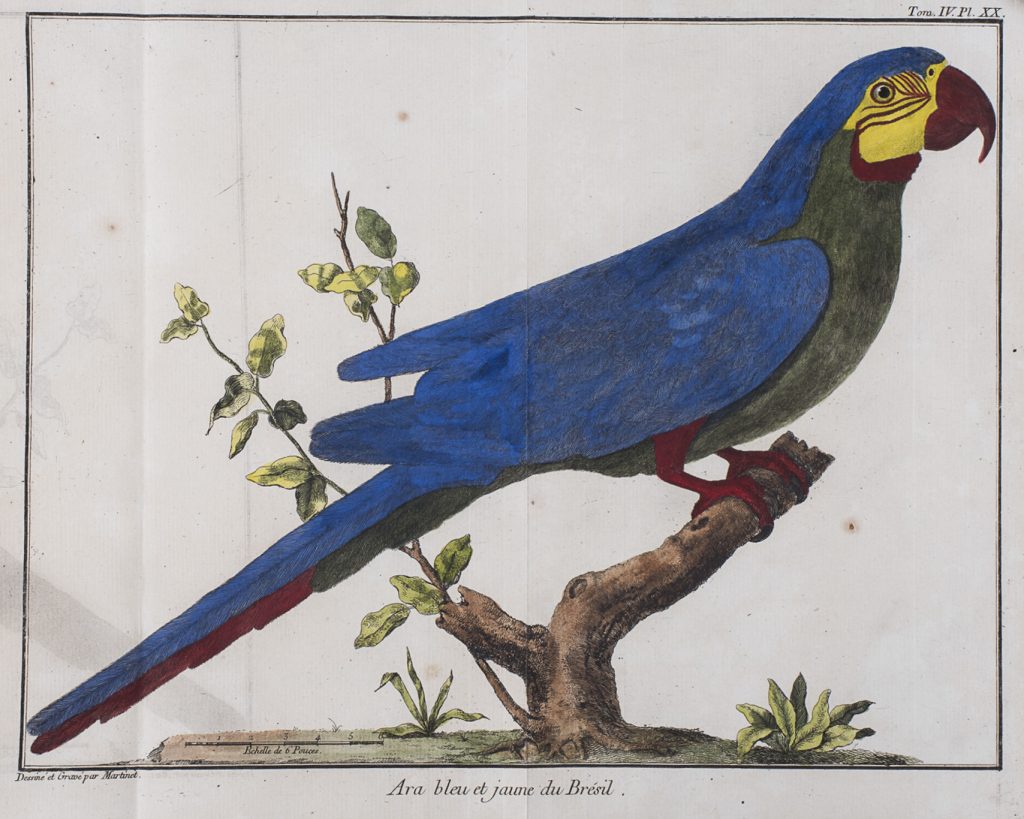By DAVID DUPONT
BG Independent News
Those rare and wondrous birds may get top billing in the Toledo Museum of Art’s new show, but it is the Europeans who prized them, sometimes to the point of extinction, who are the principal actors in this drama.
“Rare and Wondrous: Birds in Art and Culture” opened today (April 24) at the Toledo Museum of Art. It continues through July 25.
As Europeans spread around the globe to trade, colonize, and enslave they returned with specimens of exotic species not seen before in Europe.

This spurred all manner of activity. Naturalists look with interest and great detail at these birds.
This resulted in massive volumes of ornithological study, artfully illustrated.
Paula Reich, the museum’s manager of gallery interpretation and learning who curated the show, said the exhibit was inspired by the acquisition in 2019 of a copy of the six-volume “Ornithologie,” written by Mathurin-Jacques Brisson, illustrated by François-Nicolas Martinet and published in 1760. The exhibit had originally been planned for April 2020, but the museum was shuttered because of the pandemic.
A year later, “Rare and Wondrous” is the most recent in a series of TMA exhibits tied to the “Biggest Week in Birding” festivalwhen bird watchers from around the world troop to the southern shore of Lake Erie to witness the spring bird migration. The festival begins May 6.
“It’s important to do exhibitions that meaningfully engage our community and meaningfully engage important events in our community,” Museum Director Adam Levine said.
“Ornithologie,” like other bird books including Audubon’s prints are both scientific studies and art.
“That was the germ of the show,” Reich said of the purchase of “Ornithologie.”
“We have this period in the 17th and 18th centuries when we have this exposure to birds from around the world as trade and colonialism expands,” she said. “We have a lot of works in the collection that feature those exotic birds, and so I wanted to point out those circumstances, and how it impacted the wider culture.”
The exhibit features several of these ornithological volumes.
The “Cabinet of Natural Curiosities of Albertus Seba” is in many ways the most spectacular. Each of its pages is hand painted. Seba was a shareholder in the Dutch West India Company and an apothecary. “He was collecting plants and animals from around the world for medicinal purposes,” Reich said, “but then he became interested in just amassing these natural history collections.
The frontispiece of “Voyage ala Nouvelle Guineé” captures the European ideal image of these foreign missions. The author in full 18th century garb with a drawing board on his lap is shown capturing the image of a near naked indigenous woman who holds a bird aloft. A child in her lap reached for the bird while two indigenous men peer from behind, seemingly agog at the scene.
The condescension is striking. It is a portrait of Europe’s sense of superiority.

This influx of ornithological matter also inspired fashion and design. The ostrich egg shape was esteemed. The large eggs were gilded and displayed. One print shows a woman wearing a fashionable ostrich plumed hat being accosted by an ostrich pecking at her head.
A pitcher is decorated with the image of three birds at a table playing cards.
The eggs of the Great auk were also treasured – each had a distinctive pattern. The auk’s down was also in demand, so much demand that the bird was hunted into extinction. The exhibit also features an image of the Dodo Bird, also now extinct.

Exotic birds in profusion, as well as animals, are depicted in Izaac van Oosten’s “The Garden of Eden,” an oil painting from the mid-17th century. In the midst of this menagerie we see in the background Adam and Eve. Eve raises her hand as if to pluck something from a branch. This serves as an allegory for all the misfortune that would stem from this period of European overreach.
John Singleton Copley’s “Young Lady with a Dog and a Bird” painted in Boston a 100 years later hints at that dark side. The species of parakeet shown, Reich noted, comes from West Africa. Likely it arrived as a byproduct of the slave trade.
“Rare and Wondrous” is on display in Gallery 18. The scope of the exhibit belies the cozy space. That single gallery contains a portrait of a distant world whose influence still shapes our lives.

